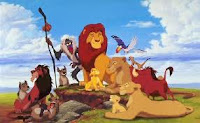Extension to Man
The form of media/technology I chose to you was apple products. Steve Jobs created this company, and through the help of design teams and other intellectual individuals, several products have been created as an extension of man. The first product I chose is the iPhone 4:
I chose this product because in reality, it wasn't until the 90s when people really began to own cellular devices. Now, in the year 2010, it is more frequent to see an individual with an iPhone, Blackberry, or other smart phone device, then to see someone without it. It is actually becoming a norm in our society to have a phone that does more than just make phone calls and send text messages. Now, people use it for their everyday needs; e-mail, internet, etc. This product is clearly an extension of man due to it's tech savy features and the popularity it has generated among our current generation.
My second product is the new Apple Macbook Air:
This product is another extension of man. My reason being that once again, in the 90s it was rare to even come across a person who owned a computer. Now, people do not own computers, rather it is the focus on the individual and everyone owns a laptop. In the development of the first laptop, it was simple just a big brick, which is exactly why I chose the Macbook Air. This little piece of hardware contains more memory space than any computer did during the 90s at probably 1/10 of it's size.
What do these two products also have in common that is an extension of man?
The iPod. The digital conversion of music from cd's to mp3 players, and now iTunes is on every apple product and you can now have music streaming from any product you own. As a matter of fact, on the iPhone, there is even an App dedicated strictly to figuring out the song that is playing on the radio or anywhere you hear it.
All these products have truly redefined technology. I can only imagine what the differences in Apple will be over the next ten or twenty years considering how far they have come along in the past ten years.






























